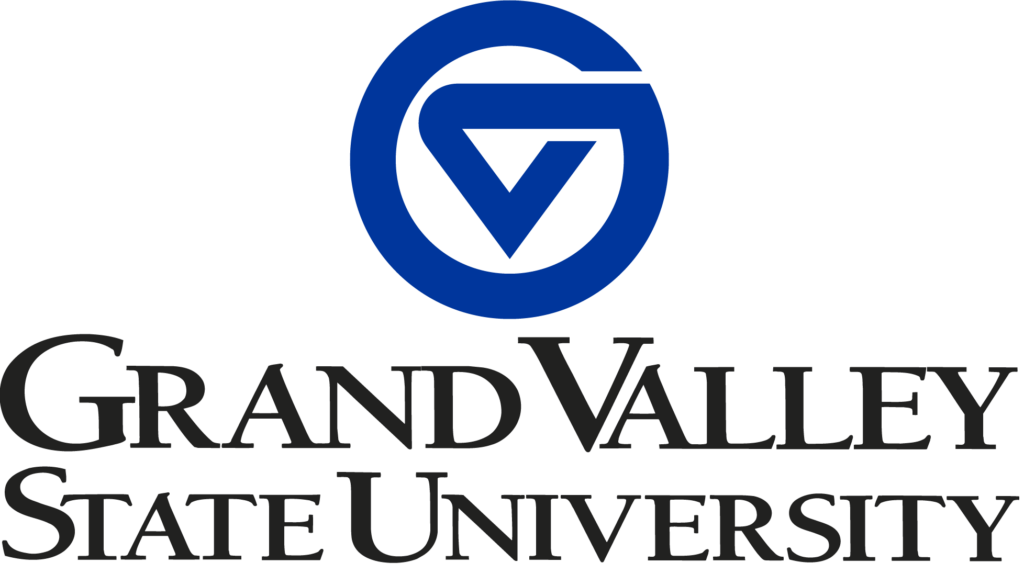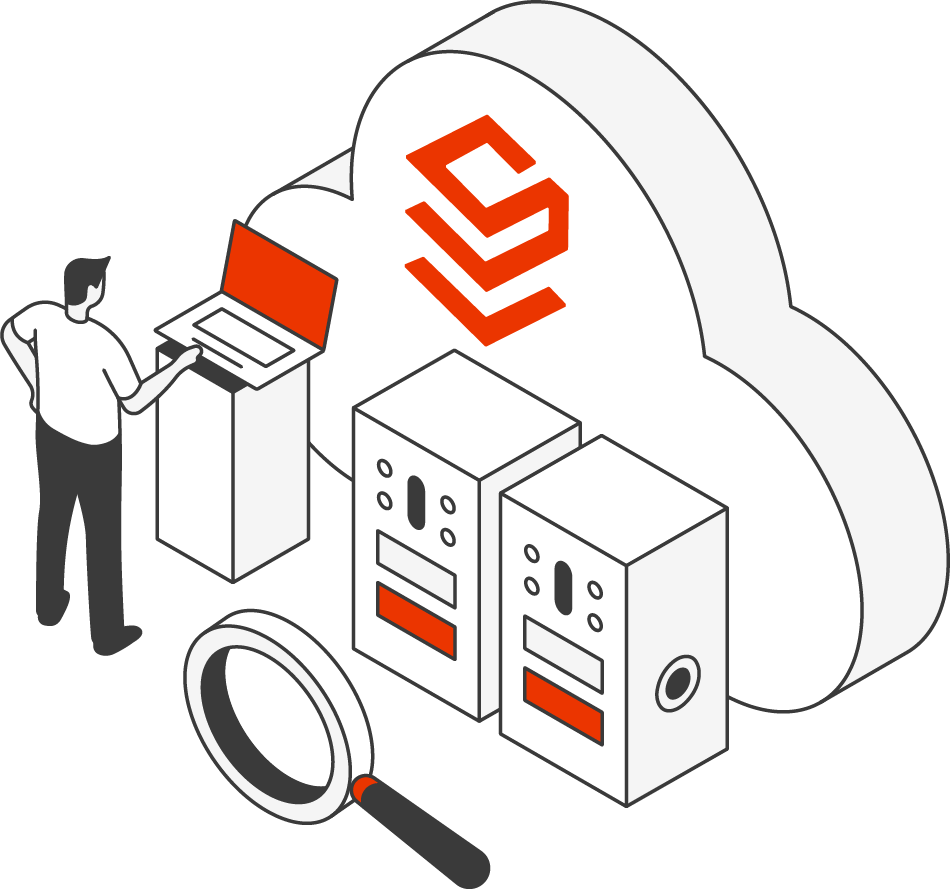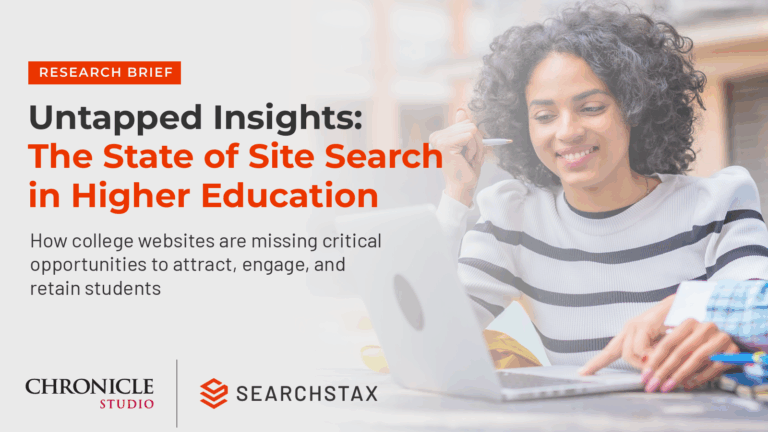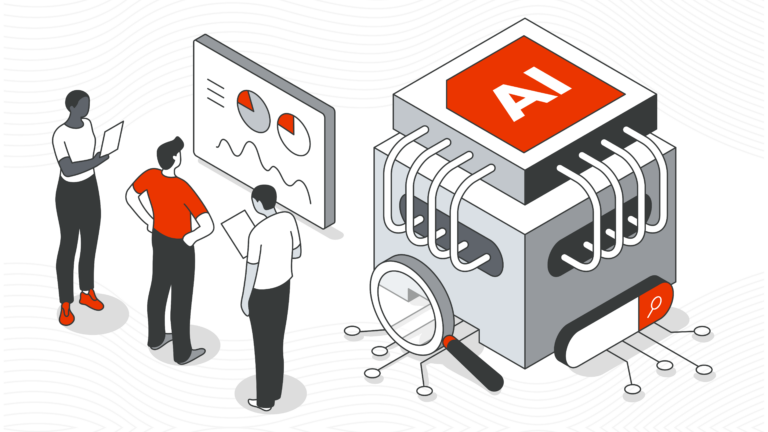Speakers
Josh Isaak – Associate Vice President of Web
Development and Content Strategy at Grand Valley State University
Jeff Dillon – Higher Education Strategist at SearchStax
Transcript
Jasmine – AMA 0:02
Hello everyone. We hope you’ve enjoyed all of the sessions so far. My name is Jasmine Windley, and I’m an event production manager here at the American Marketing Association, and I am pleased to welcome you. Welcome you to this morning’s session. How GVSU smarter Site Search drove a 49% engagement boost sponsored by SearchStax. Before our session today, I’d like to go over a few of the features you can interact with during the session. On the right side of your screen, you can see a chat box and a Q and A box. Be sure to use a chat feature to interact and network throughout this session, and use the Q and A box to ask all of your questions for the Q and A portion at the end. And with that, I’m excited to welcome you to our speakers for today. Jeff Dillon, the digital strategist at SearchStax, and Jack. Josh Isaac, the associate vice president of web development and content strategy at Grand Valley State University. Welcome Jeff and Josh.
Jeff Dillon 0:55
Thank you, Jasmine. So thanks for the intro. I’ll let Josh just say a little bit more about what he does at Grand Valley State first. Hello everybody.
Josh Isaak 1:04
I’m Josh Isaac. I’m the Associate VP of web development content strategy at GVSU. So I’m part of the University Marketing Department, and, you know, champion all digital marketing ventures and such. Our primary responsibility is with the gvsu.edu website, and I have a team of web developers and content and analytics people that help me with that.
Jeff Dillon 1:28
And my name is Jeff Dillon. I am the higher ed digital strategist at SearchStax. I have a background in higher ed, though I was in a similar position to Josh at Sacramento State University and before that, Northern Arizona University for 21 plus years combined. And then I’ve also founded Ed Tech Connect, a higher ed technology search engine. So when I say we throughout this whole presentation, I still consider myself this web director with these challenges, so it’s such a big part of my career. So there are so many challenges we’re facing now in higher ed, the enrollment cliff, fewer prospects, but each one expects exceptional digital experience. Less student names are available right now because of that, the college student service is no longer providing names nationally. Yeah, for shrinking federal and state funding. Content sprawl, 1000s of pages. Institutions like Grand Valley State have 1000s of assets, 1000s of hundreds of sub sites. It’s easy to get lost, but we have blind spots too challenges we may not even know that we have, specifically with search data we’ll talk about today. But really, in general, how are people using our university websites? And then the lack of marketing agility is real. There’s a real need in higher ed, especially marketers, to have access to data. They need to be able to act on that data quickly. Marketing owns the search at most schools, but only about 10% can tweak it the same day, and that comes from some original research we just released last week, Josh looking at these headaches or others. What? Which one stands out the most? What’s stung you the most at GVSU?
Josh Isaak 3:15
Definitely, content sprawl. So we have a custom CMS with about 700 sites and 23,000 content pages. So, you know, causes a lot of ancillary issues to do with content moderation and management, but it also, you know, on our topic today, dilutes search right? It’s sometimes difficult to find meaningful search results when you have so many pages out there, kind of all shouting at you.
Jeff Dillon 3:36
I’d say the same thing back when I was in that role. So if those hurdles look familiar, you’re not alone. Recent research finds that only 19% of higher ed web teams feel they’re delivering a great online experience. Easy menus still matter. But 96% call relevant on site, search critical, while 59% of men they don’t even track who searches. 64% never check top queries. 92% ignore no results search data. We’re going to talk a lot about that today. That’s like throwing away free focus group feedback, and 58% want AI tuned search but 84% say they’re at an early stage. So you know, how are they bridging the gap here? So these stats come from this research we did with the Chronicle where we surveyed 225, higher ed professionals on their perceptions and strategic planning. Josh, you participated in this research. Do any of these findings surprise you?
Josh Isaak 4:33
Yeah. I think for us, the 64% never looking at top queries, and then the no results terms being on the other side of that now, now that we do that, it is a very enlightening process, and it does have a big impact not doing that. It’s kind of funny. You just kind of shocked me. You didn’t do that before. But it’s, it’s low hanging fruit, if you have the right tools,
Jeff Dillon 4:53
I would say it’s low hanging fruit. So I want to have Josh talking about how they focus on site search to really address some of these gaps. And just maybe start with providing a snapshot of Grand Valley State,
Josh Isaak 5:05
Yeah, so we are a university in the Western Michigan area. We have a main campus in Allendale, which is directly west of Grand Rapids, and then a business and Health Campus in the city of Grand Rapids.
Jeff Dillon 5:20
And a little bit about your environment. You have 700 sub sites?
Josh Isaak 5:25
About 700 sub sites all built on one custom CMS. So we are kind of unique in that regard, that we are building our own custom CMS. I have a pretty deep bench when it comes to developers, so we’re able to do that. Our tech stack for our old version of our CMS is cold fusion, but we’re transitioning away from that and going to PHP Laravel for our new version of our CMS.
Jeff Dillon 5:45
And how many pages do you have? 23,000 pages?
Josh Isaak 5:49
And I would say about 54,000 files, media files, documents.
Jeff Dillon 5:56
I would say that’s on the high side, but not super high, from what I’ve seen.
Josh Isaak 6:00
No. It’s, I think, for our university, our size, though, it is excessive.
Jeff Dillon 6:06
So let’s talk about this, the search challenge you have. What did you discover when you dug into these questions, students were actually typing like, you know, 40% of traffic on GVSU comes from search with 100,000 queries a month. How did that sheer volume, you know, affect your challenge, your marketing team?
Josh Isaak 6:26
Well, in my previous employer, we just used, just spun up our own version of Apache Solr, and went from there we were using Drupal. So we just used the Drupal module. So I gotta be honest with you, we didn’t dig much into the stats until I got to GVSU. I’ve been at GVSU for about two years, and one of the things that stood out to me is the search tool. It was expensive, and it was also underutilized, not just from the sense of people using it, but also our back end people and how they were optimizing the search experience. So
Jeff Dillon 6:58
You’re a little bit unique, I would say, because many schools haven’t started enhancing their search at all, they’re using a free product, using Google. What drove you to make this transformation in your site search?
Josh Isaak 7:13
So like I said to my previous employer, we were using our own version of Apache, Solr, and while that’s relatively easy to spin up, what we found out, I tasked my team with coming up with a Content Crawler that we could crawl our website. And perhaps because we have a custom CMS, we can’t just rely on a module or anything like that to do that for us, like with Drupal. So what we found is it’s actually very difficult to write a content crawl and Effective Content Crawler. So we then kind of went shopping around for, you know, solutions, and it just happened to be that SearchStax connected with us at an opportune time, and after talking to them, that it was cost effective, the price was right. Our old provider was shifting away from peer search and going to more of a whole digital experience platform, which we weren’t too keen on, because we already have all that covered, and our marketing and branding side of our department.
Jeff Dillon 8:03
It’s, it’s pretty, I would say, common out there to you know, have that challenge. Can you talk about the timeline for your implementation? How long did it take?
Josh Isaak 8:14
So I had about five months before our current contract with Squiz was going to run out, so we needed to pivot pretty fast. So we got a couple demos done with SearchStax, and we’re able to one, you know, one of the, one of the things we wanted to get was, we want to get search back onto our site, the results page, just we didn’t want the current provider, the previous provider, had a had a hosted platform to do all that. So again, and also being a custom content management system, it can be difficult at times to integrate third party products, but we were able to use a UI kit that was based in rack to rapidly get search results right on our page. And so we were up and running within two months. We’re actually up and running within a month, testing it for a month and then live after that seamless CMS integration
Jeff Dillon 9:03
Sounds it driven what was the marketing team’s role in these in the content updates for your team,
Josh Isaak 9:13
To be honest with you, we’re kind of unique here, just because we do have, we’re developer heavy for a university marketing team, because we do have a custom content management system, so we all were able to take care of it 100% within the marketing team and not really have to rely on it. You know, they obviously did their security reviews and procurement reviews and all that sort of stuff. But when it came to actually boots on the ground and getting a run, that was all my team
Jeff Dillon 9:35
Cool. Well let’s jump into the user experience. So you’ve all seen auto suggest on many sites. You know, as soon as the visitor typed in a few keys, it predicts destinations, fixes spelling, shaves seconds off the session. It’s the friction, fee free experience that students really look for. And so GBS, you really raised the bar by adding a People Finder alongside regular suggestions so you can see. Please type in just a few letters, Eng. It could be English. It could be engineering but you can jump straight to a professor or department without a separate search. One box, two instant paths, zero dead ends. But let’s talk about the enhancements. You went live without these filters. The first thing you added these filters, sometimes we call them facets. Can you walk through the new Grand Valley search experience?
Josh Isaak 10:27
Yeah. So what happened was, when we launched the site, one of the things that we found was we have a very active University Communications Department, which is great. They produce a lot of content, a lot of different kinds of periodical style content, which is content heavy, content rich. So oftentimes, when people were looking just for information about a certain topic and that we’re not really interested in the publication side of it, they were still stumbling upon those pages. Those pages were getting boosted into the search. So we were able to easily tag all the content on our site with different facets, and it was built right into the UI kit to be able to activate that and implement facets. So now you can see people can say, I’m only interested in web content, or I’m only interested in events, or maybe someone does want to review what articles have been written about GVSU internally. So they have that option there too. And then obviously the key one which is highlighted there is programs, because that’s the, probably the number one thing that anybody’s coming to your site, as far as prospects coming to search.
Jeff Dillon 11:25
So this is really the new standard I’m sitting out there. I talked to a lot of schools, and filters speak everyone’s language. These facets, or filters, a prospective student might click on a program, or faculty might click on policy. And, you know, a lot of it’s pretty basic. When you look at other sectors like you, most other industries are already doing this, but higher ed often hasn’t even implemented this level of a search experience. So I love to see that you’ve done that campus search often feels like learning a second language. I feel like students like at GVSU, you have this Fine Arts Center, and people type in cap, CAC, that’s never going to mean the same thing anywhere else. So you just can’t leave it up to an algorithm. So you need powerful features, like what you’re seeing here is a promotion, promotions and synonyms, promotion means you can push something to the top when you need to. So tell us about how you use promotions and synonyms that improve your relevance, which is what we’re talking about in this session.
Josh Isaak 12:31
So I mean, I think when you look at promotions, they have two main uses and you know, one of those is those kind of, like must have, sort of, they need to float to the top when someone types in admissions, or any of the myriad of different terms they might use for admissions. You want to push that to the top for your prospects, because at the end of the day, while this site does serve a lot of different audiences, ultimately a prospective student experience is what we want to be on the top. So we use it there for things like admissions, financial aid, housing, those kinds of prospective experiences. But then there’s also a myriad of sites, the constellations around gvsu.edu, that aren’t part of the domain. So our bookstore is a third party product. Athletics also runs their own website, so using promotions, you can basically create a link to that page. So when they search here, they can get shuttled off to the proper site.
Jeff Dillon 13:22
The example we’re showing here is a site that’s outside of the domain, so you can set up a promotion for content that might not, might not have got indexed for some reason. And the PF is really instant. Right, the page pops up into the spotlight. You can make it look organic or kind of it’s been highlighted here with a little box, but some of the content is so important we want to make sure, even if it might not be searched 1000s of times a month. It’s so important. Maybe it’s for mental health, or things we’ve seen schools really elevate those types of searches too, because it’s critical to like the foundation of a student’s experience. Promotions and synonyms solve the known pain points, but the next wins are really when the student tells us when something feels a little off. So let’s see how you capture that, that live feedback tells us about how you handle search feedback, which isn’t done very much.
Josh Isaak 14:22
Yeah. So we always had, our website has always had the ability to every page at the bottom has the ability to send feedback. They see content problems, broken links or whatever, and there’s a whole queue involved in that, but we did a special one here. So at the bottom of the search results page, we basically have a form that’s part of our CMS that people can fill out. We get notified when they do, and they let us, let us know, what are they searching for? What do they expect to find? And then any, you know, other comments they might have about that. So, you know, we open that up and, you know, you get great. Feedback. You get good feedback, I would say, sometimes, and then, and then sometimes you discover, you know, issues that the person’s just using the search wrong. We were able to reach out to them and say, you know, that’s not something you’re going to find on the site. You really need to go over to our student information system or something like that. So it has multiple facets of advantages to it.
Jeff Dillon 15:16
Well, let’s take a look at the data that we ‘ve been getting from this form. So, so on this graph, going down is good, okay? Because this is largely a complaint metric, that you’re not 100% but kind of close, right? Tell us what we’re looking at here.
Josh Isaak 15:32
So this is basically we launched in July of 24 so you can see there, we got about 17 complaints in that first month. And, you know, started addressing those complaints, tweaking the relevancy model, putting promotions where needed. And you can just see, it’s just the data speaks for itself, that it was a successful campaign, successful feedback loop, that we’re able to improve search, and the complaints or feedback dropped dramatically.
Jeff Dillon 15:59
Yeah, that’s great. And I always like to point out that often people, especially students, won’t complain when they have a search that doesn’t work, because they don’t really know if the search is broken. They might not even know, but the answer exists. So the fact that you’re getting, you were getting 1718, now you’re getting two or three. Like, it is a great metric, not all, but like, what a great you know, a lot of I haven’t seen too many schools that are doing this, but I love that you’re getting more insight into what students are struggling with. So this is where we get into the title of this webinar, this 49% like, how do we get 49% engagement? And what we’ve done is we’ve really equated that engagement to this click through rate. Okay, we’re it’s a great benchmark of a search, a search of success. There’s other metrics here that we’ll talk about. But really, before SearchStax, GVSU was at about 35% of a click through rate, and within two months of being with SearchStax, it was up to 52% this slide was created just in the last few weeks. So now we’re already up to 58% so that converts to about a 66% improvement. So we advertise this as 49% but if you look at an improvement in click through rate from 35% to 58.5% with this, this is about three or four weeks of a snapshot, a recent snapshot. So depending on the week you get. You know that it varies a little bit, but it’s been consistently over 52% which is pretty high even from the University I’m seeing. Josh, can you talk about this dashboard in general, your click through rate and how you use the search tax analytic dashboard that we’re looking at now?
Josh Isaak 17:38
We first use a click through rate to do as a promo thing for our team that we have been successful at implementing the search here. So I think it’s, you know, it’s a combination. This is a great front sort of door to the dashboard, but there’s so much data behind this too. So obviously click through rate is something we keep an eye on, but you can see right below that, with the click through rate ticker there, that it stays pretty consistent. You know, it’s not like a fluke, that it just popped up one month or anything like that. Obviously, like average click position, that’s something you see, that spike that happened earlier, that that’s something you want to keep an eye on as far as you want that low. Because obviously, people are finding what they want at the top of the search results, and then no results. Search too. And there’s a, there’s a whole dashboard behind that too, that really helps hone in on that. You know, if we see a spike in that, it might be some new programs that have come around that maybe people don’t quite know how to refer to them. And then I think another key aspect, and more of a technical side, is the latency, because it is a round trip you are, you know, starting on our site and going to round trip to the search stack servers. From a technical standpoint, it’s always a good idea to keep an eye on that to make sure that the experience isn’t suffering through latency, right?
Jeff Dillon 18:47
And that latency is that upper right hand box, the 230 so that green indicates like we’re going the right direction. It’s not getting slower. But, yeah, that’s good and this is just the front of the first page. You see there’s a lot more you can dive into. You can see like, well, when people search for this, what’s driving the what are the URLs that are that are providing this result, all these search results, so they’re all interactive, but this is really the kind of the starting point where, if you only have a few minutes, you know, we need to make that data digestible. So I’m really, I really love showing the data dashboard and to end on these, no results searches, let’s talk a little bit more about these, no results searches. We tend to focus so much on these because it can surface content gaps, and it’s one of these data points that most schools aren’t getting. So why? Why is that? And I’ll. So what you’re looking at here is some no results searches from different schools. This is anonymous. Some of these are from GVSU. Some are from other schools. So these are real search results from a composite of schools. You know, you’ll see things like cyber technology or astronomy. So these are programs that students are looking for that don’t have a match. So what? What would you do in that case? If there was a program that came up at GVSU and you saw that, like, what’s your action there?
Josh Isaak 20:05
Josh, I would definitely reach out to academics, you know, especially if we saw it often, you know, that it wasn’t just a fluke, and let them know, I think, in any, in any of these types of searches like that, chem, draw, one is interesting there, you know, is that, is that something meaningful to people in the industry that maybe we just don’t represent properly in the website? I am on this website. I might reach out to the chemistry department and say, Is there a synonym or something here that we can use to map that across the search results?
Jeff Dillon 20:29
The story I always like to tell, true story. One school saw data dental hygiene, one of their top no results searches. They’re now looking at providing a dental hygiene program, because it’s such a popular request, but also things like, look at the course catalog. This one did not come from GVSU, but it was from another school, and when I showed their web director, he knew about it. He’s like, Oh yeah, I was almost embarrassed for them, like, why would the course catalog be no results? He said, Well, they switched out their system, they didn’t tell us, and this is this one day, and we caught on that one day, and it was really interesting, the insights you can get from no results searches. So either you want to fill the content gap, fill the content gap with new content, set up a synonym, make your other academics aware. But probably the most popular part of the most enhanced search experiences we’re seeing are schools. They love this. But when I talk about search, no results, searches, I often people say, Why doesn’t AI just do this? Like we have AI now? And, you know, I would really say that it’s, it’s complicated, and that we don’t want AI to do all this. There’s generative AI, right? Type of thing, and then there’s, there’s machine learning and natural language processing. And so what we have is something called Smart match assist, where these are all the results queries. So we’ll say, hey, we suggest through our machine learning, this should be a match. And you can go in and click the Accept it with the green checks are accepted and the red, the red X is like, Nope, we don’t want that connected. So you need to be able to connect the dots. I almost thought when we first built this and like, why we just make our algorithm better and have AI just do it, but this is proof that we’re not quite there yet. We need it. We need a human in the loop. So that’s one feature that AI is really on the back end, helping deliver better relevancy, but also smart ranking, so using advanced language processing to fine tune the order of the results. So we are seeing increases in the average click position and the click through rate for when we turn this on. So again, we haven’t. It’s not just part of the algorithm. We’re having a real control error where an administrator can say, Yeah, I want to test this AI feature. And so far, it’s been pretty, pretty great results, and we’re happy with that. But there’s just this overall philosophy of, you know, AI is, like, I said, there’s generative AI, and then there’s AI you can be building into the back end. Machine learning has been here. We’ve been using this for a decade now, and national language processing, so you have to understand core search. So of course, search is complicated, which is why Josh is like, hey, we need a company focused on search, not a company that’s Hey, we’re doing all these other things that search is one of the things we’re doing. Number one is complicated, no search, but also, yeah, let’s use large language models and always have a human in the loop. So we’re calling that really practical AI, and that’s our approach at search decks. Josh, what are your thoughts on AI powered search, or AI in general, in higher ed as far as the SearchStax stuff.
Josh Isaak 23:40
We’re just starting to scratch the surface of that, so to speak. But, you know, we’ve already started using AI to help augment our search especially when it comes to SearchStax. It was something that came out when we during our implementation, where we noticed our meta descriptions on our website were lacking most of the time or completely absent upon a lot of pages. So we leveraged an AI, custom AI that we built integration that basically crawled our entire site and wrote those meta descriptions for us, and we’re able to boost those in the relevancy model on the search stack side, and it had a big impact on improving the quality of the search.,
Jeff Dillon 24:15
Yeah I love that use case. So with that, I want to wrap it up and just leave you with some takeaways you can remember anything from this quick session. Smart Search equals measurable wins. GBC swapped out squid funnel back for SearchStax and lifted their search click through rate up to 52 to 66% that jump in engagement happened under two months. Marketing now tunes search in real time. So it’s roughly 100,000 queries a month that the GVSU team can add promotions and for terms like calendar, housing drops, add synonyms, fix and spelling. So marketing teams have this ability now, and they need to. See that and then search data is strategic Intel dashboards exposing dot queries, quick position, no results. So these gaps let us spot these blind spots, so it’s valuable data. So in this quick, quick session here, I want to close it out and just say thank you for being here. We do have some questions, all we’ll get to, but I’m going to go right to this contact slide and say we are sharing one of the questions, are we going to share slides? Yes, we will share the slides. And look at this top bar I’m going to show here. If you go to our website, SearchStax.com, you can download this report. I’ve been talking about it. It just came out last week, and has a lot of great data. I just highlighted a few points. It’s free, so I’d say, go download that report. But contact me. I love to talk to you about your digital experience at your school, if anyone’s interested. And I’m going to go to the questions and see what we have. So first one here is, how are we going to throw these to you, Josh, can you take your first shot and see what you think? How does SearchStax connect data from multi site networks, multi site networks to have the search function work efficiently. How do you do this with a multi-site environment? Josh,
Josh Isaak 26:10
Well, I mean, that’s not really a concern for us. We would. That’s something we’re exploring, just because we did that in my old employer, which with Apache Solr, which was kind of a prospective student portal and the internal portal for internal audiences. So we were able to use two instances of Apache Solr and index them both, and then have them kind of cross seed search results based on what you made your calls from, from your, you know, your search page. So that’s an I know that’s a possible word, just exploring that with SearchStax, because you can get multiple instances of search indices.
Jeff Dillon 26:50
And I’ll add a little bit to that. I think that’s a great question, because that’s why we’re targeting higher ed, is because it’s so complex. So the whole key is to be able to index all these sub domains. I don’t want to dive into a technical discussion on that, but you might have different content types in different places, like you have a course catalog over here, you have an event calendar over here, the whole key is to be able to do what you just said. So how do you do it? Probably a longer conversation, but it’s possible, and we do it. We did pretty well. Okay, Josh, you mentioned you built something that crawled sites to identify where meta descriptions were missing, and wrote and wrote them. Is that code available anywhere? Can you talk more about that?
Josh Isaak 27:32
It’s not in a public repo at this time, but I would be happy. I don’t know if you guys share my contact information. If you want to reach out to me, I can certainly we can sit down with our developers and talk about how we pulled that off.
Jeff Dillon 27:41
I could put you in Connie with Josh. You’d probably find him on his website. So, yep, all right, wow. 700 sub sites. Do most marketing teams have their own developers across higher ed
Josh Isaak 27:53
I would say, No. You know, my previous employer, I actually worked in it, and then, you know, we just partnered with the marketing department. It’s a pretty unique situation at GVSU. It makes it more unique that I have such a deep bench. I have a deeper bench in the marketing department here than I did in my previous employer when I was in it.
Jeff Dillon 28:13
Okay, another question with AI coming, what metrics? How will the metrics change? Oh, great question. So CTR is a big one. Average click position. I went through those. Generative AI is not here yet. Finding schools using generative AI. There’s a few, not a few doing it, very few doing it well. So once that happens, yes, CTR is going to change, right? Like someone finds what they have, they’re not going to click through. It’s not quite there yet. So I don’t know about it, hopefully we’ll have something like the thumbs up, like, Was it useful? And we’ll have this new metric of satisfaction with Gen AI answers. I don’t know who I answered yet, but we’re not quite there yet, but that was a great question. I’d love to explore further. But we are, hey, we did it. We have a minute to spare. So I think we’re, we’re, we’re good again. Contact me if you have any questions. We’d like to explore anything at your school.
Jasmine – AMA 29:07
Yeah, thank you so much, Josh and Jeff for this wonderful presentation. And again, thank you everyone for attending as a friendly reminder. This video will be available on demand later today, right in the platform under the Schedule tab. And in case you missed it as well, the slides are available under the Resource tab that is also on the right side. So now you can head over to the exhibitor booth and visit SearchStax booth and check out all of their resources on their page. Thank you all and thank you Jeff and Josh for your time today.
Jeff Dillon 29:43
Thanks, Jasmine.









